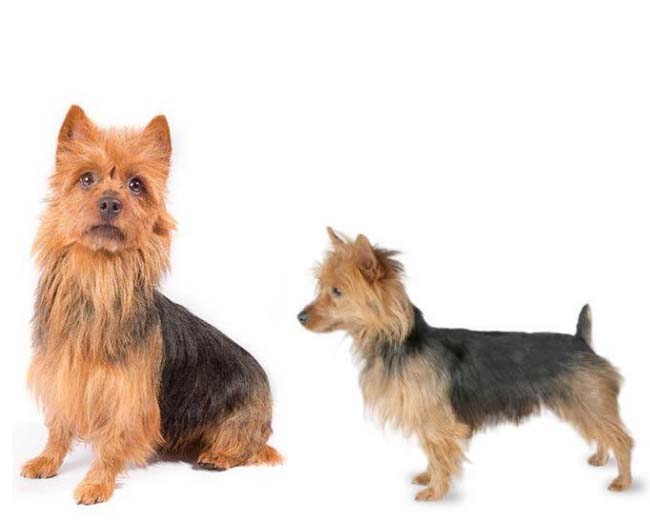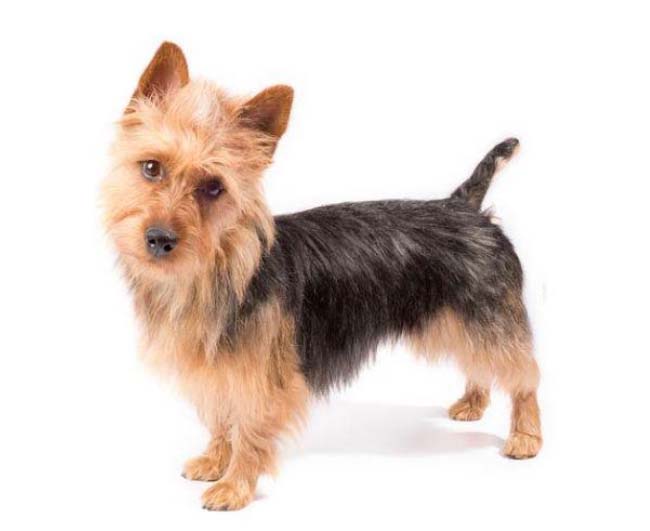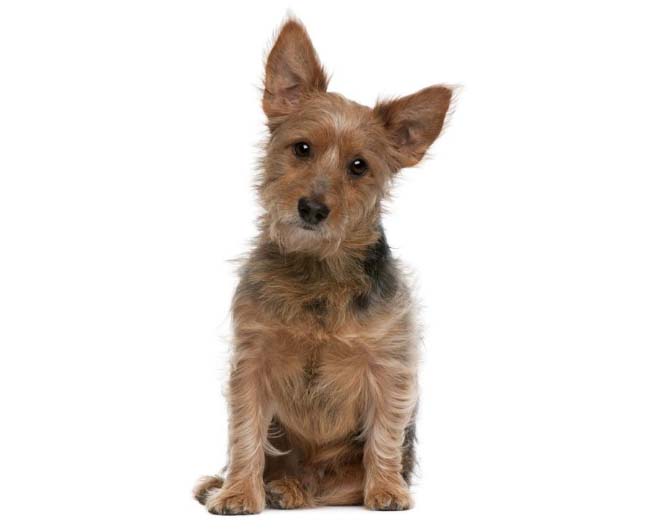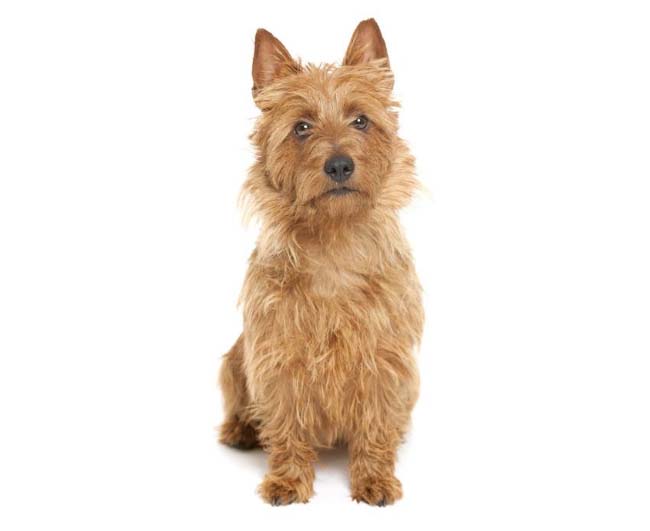We've gone Pink to help fight Breast Cancer.
Use code "BREAST" and we'll Donate $50 to National Breast Cancer Foundation
Main Menu
Petsy Breed Pages
The world’s most comprehensive information on the ...

$1500.00 - $2500.00
Aussie
Small
Terrier Group
Medium
Medium
Medium
12 to 14 years

Would you like to know what it would cost to insure an Australian Terrier? Find out by getting a free quote, with petsy pet insurance.










Australian Terrier come in a variety of colours, including Red, Red, Blue and Tan, Sand.


How much do
Australian Terrier eat?
2.00 to 2.50 cups of food a day

How much
exercise do they need?
40 to 60 Mins

Are they kid friendly? Suitable for families with older children

Do they need a lot of space? Yes, they do best with a large, open yard to exercise in
Patellar Luxation
Legg-Perthes Disease
Hip Dysplasia
Heart murmurs
The Aussie Terriers need 1/2 to 1 cup dry food per day. And unlike several tiny breeds, they are not a picky eater. They have a voracious appetite, although he rarely overeats. Monitor their food intake to ensure that they don't gain too much gain to avoid possible health implications. Provide them with fresh and clean water at all times.
The Aussie has a tough coat that sheds very little and is relatively easy to groom. Occasional baths and weekly brushings with a horsehair mitt or de-shedding glove to pull away dead hairs will help to keep him in beautiful condition.
Grooming them does not require much work. Clippers or a combination of clippers and stripping (a method in which the coat is thinned and shortened using a sharp, comb-like tool called a stripping knife) can be used to trim their coat. If your dog's nails don't break off naturally, trim them once or twice a month to avoid painful tears and other issues.
Check their lips, ears, nose, throat, eyes, and feet for sores, rashes, or symptoms of illness such as redness, tenderness, or inflammation. Ears should have a pleasant odour and be free of wax or gunk, and eyes should be clean and free of redness or discharge.
Make grooming a positive experience filled with praise and rewards, and you'll lay the groundwork for easy veterinary exams and other handling when he's an adult.
The Australian Terrier is a high-energy dog that was bred to leap and run. They must have at least 2 to 3 hours of exercise on a daily basis through play and walks. They may dig up your garden and begin to bark excessively if they do not get enough exercise.
Keep them happy and healthy by satisfying their energy needs.
Veterinary care is essential to a dog's health and well-being, however, the frequency of treatment and checkups will depend on the dog. Scheduled six-monthly health check visits with your vet are important to ensure they are healthy and happy throughout all life stages.
Routine maintenance for your dog gives you a chance to track your dog's growth and development, discuss any concerns with your vet, and form a key part of preventative care.
The Aussie is an excellent family pet, especially for families with children. They enjoy playing, and like other dogs, they should be socialized at an early age.
Australian Terriers are active and enthusiastic, eager to play with their owners and later cuddle on the sofa.
Australian Terriers are smart and can easily pick up new lessons. They can perform really well, especially that they are eager to please their family.
Reinforce positive discipline to motivate them to do better.
Australian Terriers are friendly and affectionate. They get along well with other dogs and cats, but because of their prey drive, they may hunt smaller animals.
Proper and early socialization is needed to help them learn how to behave well around other domestic pets.
Here are some of the breeders who we work with as part of our breeder awareness program.
They are invested in ensuring the longevity of the breed and that new owner become responsible Affenpinchers owners.
Affenpinchers who are friends of Petsy





Enter your email in the form below and we will send you the full report as a pdf directly to your inbox.
Don’t worry, we hate spam too – read our privacy policy
Find the right level of insurance for your needs our customised quote takes less than a few minutes to complete.
The Aussie Terriers need 1/2 to 1 cup dry food per day. And unlike several tiny breeds, they are not a picky eater. They have a voracious appetite, although he rarely overeats. Monitor their food intake to ensure that they don't gain too much gain to avoid possible health implications. Provide them with fresh and clean water at all times.
The Australian Terrier is a high-energy dog that was bred to leap and run. They must have at least 2 to 3 hours of exercise on a daily basis through play and walks. They may dig up your garden and begin to bark excessively if they do not get enough exercise.
Keep them happy and healthy by satisfying their energy needs.
The Aussie is an excellent family pet, especially for families with children. They enjoy playing, and like other dogs, they should be socialized at an early age.
Australian Terriers are active and enthusiastic, eager to play with their owners and later cuddle on the sofa.
Australian Terriers are friendly and affectionate. They get along well with other dogs and cats, but because of their prey drive, they may hunt smaller animals.
Proper and early socialization is needed to help them learn how to behave well around other domestic pets.
Suite 58, Mezzanine/388 George St, Sydney NSW 2000
Petsy Pty Ltd (ABN 54 633 343 058, AR 1277359) (‘Petsy’) distributes and promotes Petsy Pet Protection Plus (formally Petsy Pet Insurance), Petsy Puppy Protection Plus and Petsy Kitten Protection Plus as an authorised representative of Knose Financial Services Pty Ltd (ABN 38 620 795 735, AFSL 536651) trading as ThePetInsuranceCompany.com.au (‘ThePetInsuranceCompany.com.au’). ThePetInsuranceCompany.com.au is an underwriting agency acting under a binding authority as an agent for the insurer; Pacific International Insurance Pty Limited (ABN 83 169 311 193) (‘Pacific) in relation to Petsy Puppy Protection Plus and Petsy Kitten Protection Plus policies and Petsy Pet Protection Plus policies from 01 March 2023 or have an anniversary renewal date from 18 March 2023, and the Australia branch of Allied World Assurance Company, Ltd (ABN 54 163 304 907) (‘Allied World’) in relation to Petsy Pet Insurance policies purchased between 17 February 2022 and 28 February 2023 (inclusive) or renewed between 01 March 2023 and 17 March 2023 (inclusive). In all aspects of arranging this product, Petsy and ThePetInsuranceCompany.com.au act as an agent of Pacific/Allied World (as the case may be) and not as your agent. Any advice contained in this email is general advice only and has been prepared without taking into account individual objectives, financial situation or needs and you should consider the appropriateness of any such advice, the Product Disclosure Statement (‘PDS’) and the Target Market Determination (‘TMD’) available via http://www.petsy.com.au or by calling 1300 952 790 before making a decision to acquire, or to continue to hold, the product. Terms, conditions, limits and exclusions apply. Please refer to the PDS.
© Copyright 2024 Petsy Pet Insurance
During the application process You will be provided with the option to include Optional Extra Benefits that cover certain conditions and Treatments which are not otherwise covered under the Policy.
The Optional Extra Benefits are:
Alternative Therapies, Behavioural Problems, and Dental Illness.
Examples of Alternative Therapies: Acupuncture, physiotherapy, hydrotherapy
Examples of Behavioural Problems: Excessive licking, fur pulling, pacing and destructive
chewing.
Examples of Dental Illnesses: Dental diseases, gingivitis, periodontal disease.